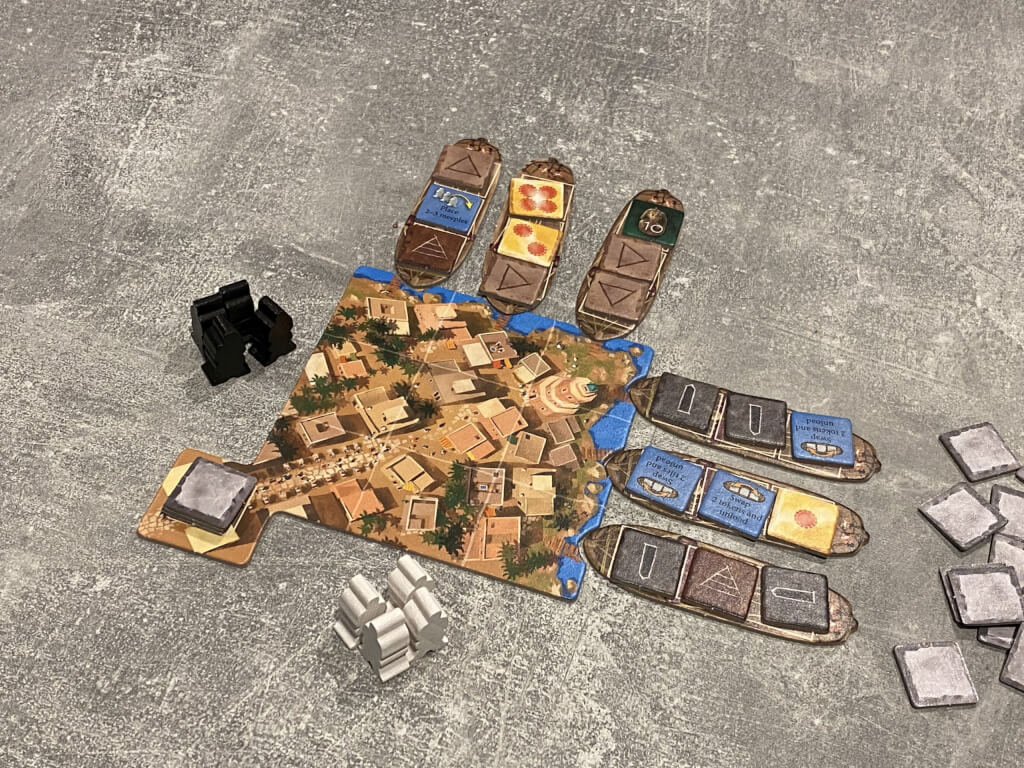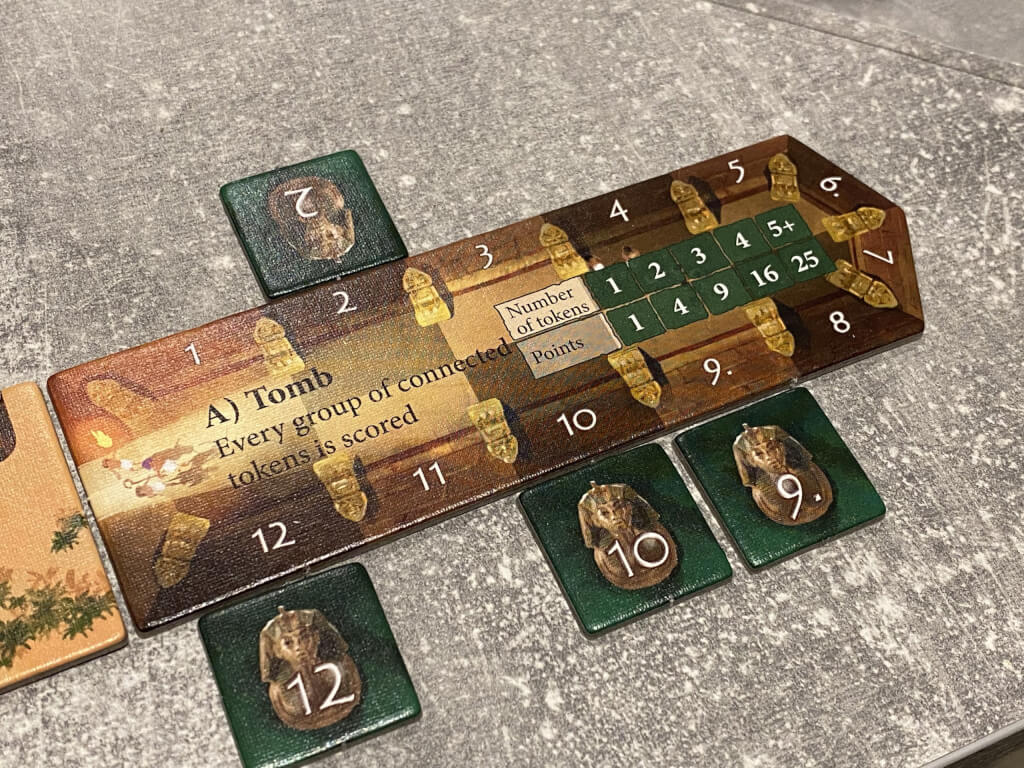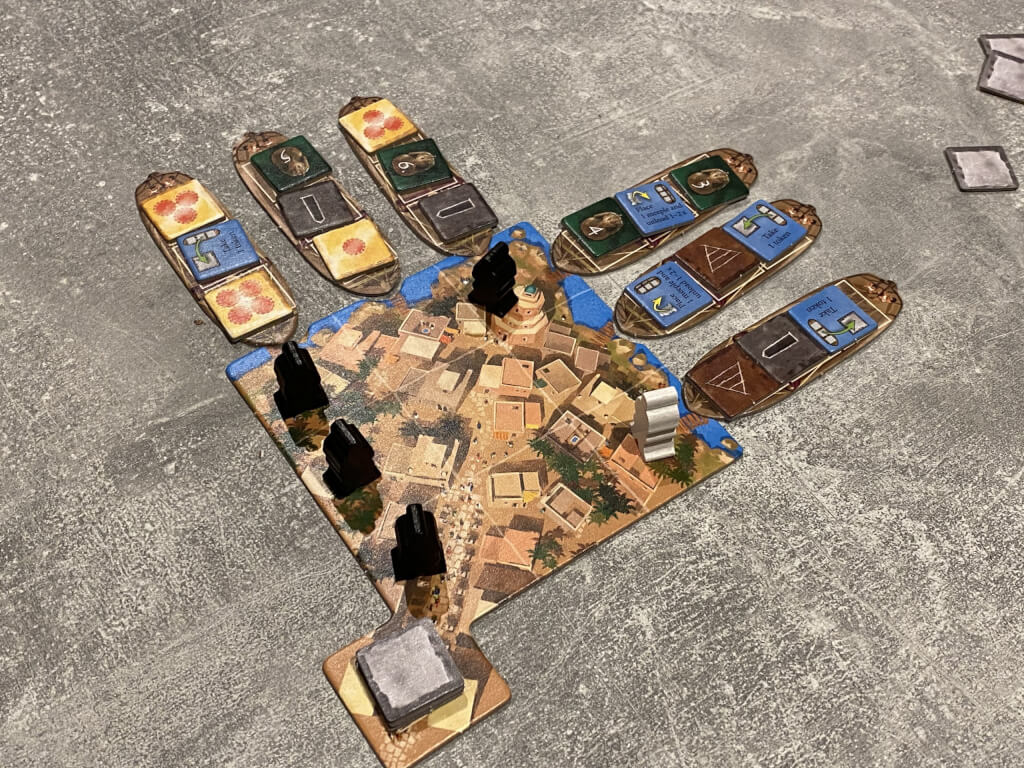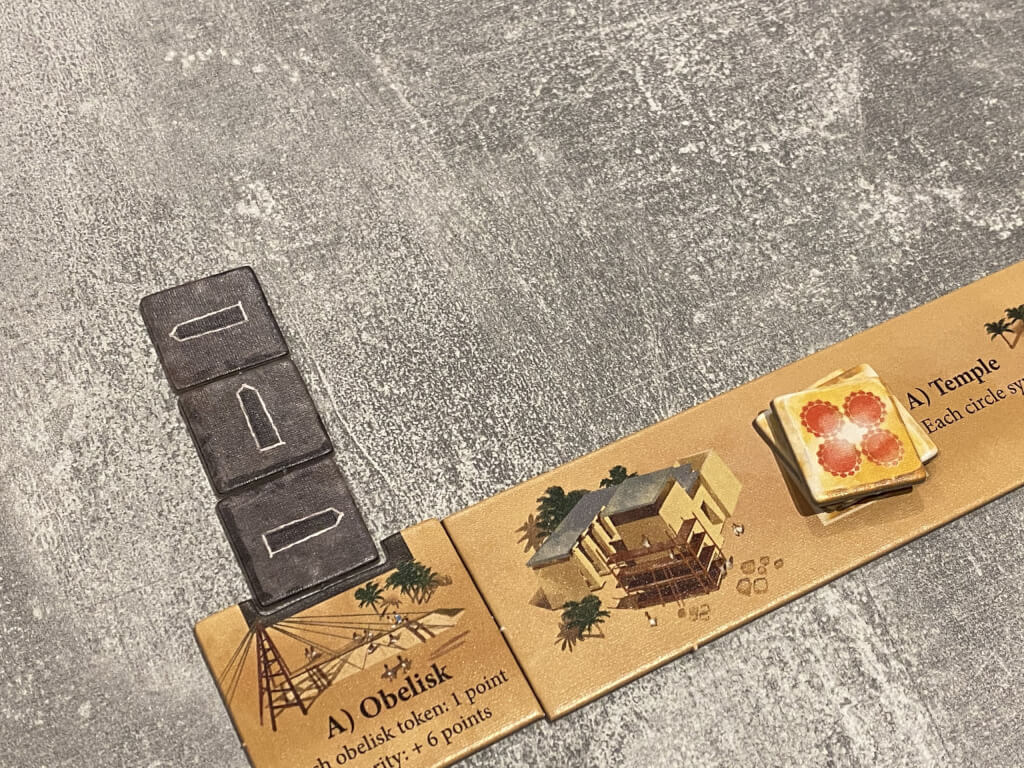Break the monotony of lockdown with Imhotep: The Duel
Last year, I was lucky enough to grab a copy of Phil Walker-Hardings’ Imhotep, a two to four-player game in which the players compete to build pyramids, obelisks and tombs in honour of the Pharaoh. In Imhotep: The Duel, the gameplay is similar but has a lighter, more streamlined feel and a lot more misdirection between the players.
Much as in the original, the players (strictly two in this case) will compete to score the most points. There are four areas in which to do so: obelisks, offerings at the Sun Temple, pyramids and tomb progress. Except for the obelisk and pyramid sections, these scoring concepts are pretty abstract and bear little relation to what they are named after.
In another similarity with its larger sibling, Imhotep: The Duel uses the coming and going of ships as the main method for building out the respective empires. The board is a small three by three grid with an odd little leg (that holds a reserve tile stack) and an indent aligned to each of the rows and columns of the grid on two sides.

Aligned to each of the two sides with indents will be a boat with three spaces on it. In each space, the players will randomly place a face-up tile showing a symbol that matches one of the scoring locations, or a blue action. The players will place meeples into the three by three grid and then activate rows or columns to claim the goods on the boat that lines up with them.
Wait, let me rewind a step here. On their turn, a player only has three actions available to them. They may place a meeple (of the four available to each of them) or activate a row or column of at least two meeples to retrieve goods from the boat. The third action, which is conditional, is that a player may activate one of the (usually powerful) action tiles if they have one.
So, the setup is simple. The game begins with the first player having to put down a meeple, let’s say they choose the central space. The next player will do the same (because no rows can be activated yet, and no one has an action tile.) Let’s say that player places their meeple in one of the corner spaces, which means that we still don’t have two meeples in the same row or column.

Now, let’s say that the next move makes a row of two — one meeple for each player — and then the next player chooses to unload the boat at the end of that row. The two tokens on the boat that correspond to the locations of the meeples on the grid will be taken by the players and added to their personal construction space. The meeples will then be returned.
What this really means is that in most cases you’ll want to activate rows or columns that have two or ideally three of your own meeples on them. In some cases, however, you may also wish to activate a row of meeples that force your opponent to spend their meeples on a boat that they don’t really wan, or to have one of the items on the boat be wasted (since if only two meeples are in the line, the third item on the boat is discarded).
Scoring opportunities are fairly varied, with the pyramids offering more and more points based on how high you build them, the Sun Temple scoring relating to the total number of spots on the collected tokens, the obelisk tokens worth one point each (and six for the highest). The tomb tiles work slightly differently, with each having a number on it, and the more a player can line up the higher they will score.

The action tiles don’t score, but they do unlock actions powerful enough to swing the tide of a game if you can snag perhaps two to one of them in comparison to your opponent. It is sometimes necessary therefore to let an opponent score to grab an action tile that will allow you to perhaps place two or three meeples on the next turn, or you may simply see a scoring opportunity that causes you to ignore everything else.
We found that there were more or less two distinct ways to play Imhotep: The Duel that broadly amounts to either keeping things fairly civilised or going directly for the jugular. Obviously, these strategies ebb and flow in each game fairly naturally because of the small playing area and the directly competitive nature of the game, but the reality is that it takes a few games for you to really get into the spirit of things.
When you do though, you’ll start to figure out what the appeal of Imhotep: The Duel is. As with all good two-player games, there’s a chess-like intensity to this game that comes from the same two people facing off against each other time after time. The game itself has an inbuilt efficiency puzzle that is tighter than most, as you plan out each move, but the style of your opponent is a puzzle in itself, and the more experienced the players, the better the game.

Given the current Coronavirus lockdown, Imhotep: The Duel makes a strong case for itself thanks to the likelihood that people in couples or family groups will need to find ways to spend time with each other, and to let their frustrations out. Playing Imhotep: The Duel over and over again offers a rewarding way to pass the time, especially since each game lasts just twenty or so minutes before the next one can begin again.
You can purchase Imhotep: The Duel on Amazon.
Love board games? Check out our list of the top board games we’ve reviewed.
Comments are closed.